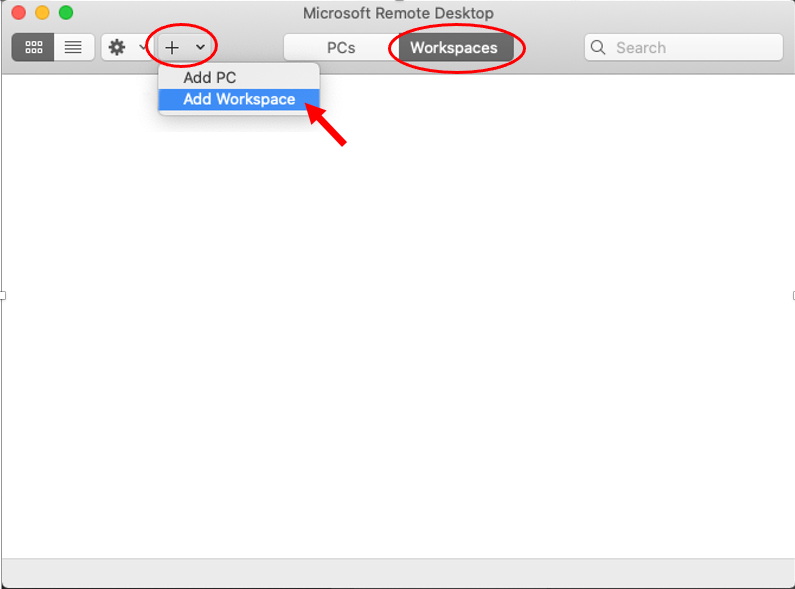Overview
Overview
The Pitt IT Virtual Desktop (Microsoft) enables faculty and staff to remotely access a set software and resources. The convenience of the Virtual Desktop is that you can access it from any location, using almost any computer or mobile device, at any time of day. It's your personal 24/7, on-the-go solution.
Benefits of Virtual Desktop
- Software access without saving it on your device's hard drive, for machines with limited storage capacity
- Uses less bandwidth and compute resources than Office online, for those experiencing performance issues
- Connect from a web browser or app on nearly any Windows, MacOS, Android or iOS device
- Access the most popular software for staff use, with synced access to files saved in your OneDrive cloud storage
- Secure your work with cloud-based services and storage behind Pitt Passport sign-on and Duo multifactor authentication
Detail
Access
Virtual Desktop access is available for all faculty and staff. If you can not access the Virtual Desktop service, please contact the Technology Help Desk.
Use the Web Client
Note: The web client requires HTML 5. The latest version of most browsers supports HTML 5.
- Navigate to pi.tt/vdesktop (https://client.wvd.microsoft.com/arm/webclient/index.html).
- Enter your University email address. You are redirected to the Pitt Passport login screen.
- Log in using your University Computing Account username and password.
- Double click Enterprise Remote Access under the heading Pitt IT – Remote Work.
- Enter your University Computing Account username and password to complete the login process.
Important: You will be saving your files to your OneDrive account. You cannot save files to your local computer or device when using the web interface.
Use the Remote Desktop Client
Download the Client
Following are general steps for downloading the client:
- Navigate to https://docs.microsoft.com/en-us/azure/virtual-desktop.
- From the Connect to Windows Virtual Desktop section, click on the link for the type of device you are using.
- Follow the directions on the page to install the client and connect to Virtual Desktop.
- To add a workspace, in the Remote Desktop client select the Workspaces tab. Click the "+" sign and choose Add Workspace.

- Enter your <username @ pitt.edu> University email address, and click Add. (Alternatively, you can enter https://rdweb.wvd.microsoft.com/api/arm/feeddiscovery as the workspace URL, and then click Add.)
Specific instructions for each operating system are listed below:
Launch the Client
- Launch Remote Desktop by navigating to the web client or opening the desktop client (e.g., double-click on the Remote Desktop icon or search for the program from the Start menu.)
- If you have never used the client before, the “Let’s Get Started” screen displays. Click Subscribe to log in with Pitt Passport (Windows only), or click Subscribe with URL, enter your Pitt email address, and click Next.
- Log in using your University Computing Account username and password.
- Double click Enterprise Remote Access under the heading Pitt IT – Remote Work.
- Enter your University Computing Account username and password to complete the login process.
- Once you've logged in, the Virtual Desktop remote lets you access available software titles and resources.
- To disconnect from Virtual Desktop, simply close the web client browser window or the desktop client.
Available Software
Available Software
The following software is available on Pitt IT Virtual Desktop:
- Adobe Creative Cloud Suite Named User Licensing (Acrobat, Photoshop, Lightroom, Illustrator, etc.)
- Google Chrome
- Microsoft 365 (Access, Excel, Work, Powerpoint, Outlook, etc.)
- Microsoft Project (Project Online Pro for Office 365 license needed)
- Microsoft Teams (Note: Installation of Teams software is required for its use.)
- Microsoft Visio (Visio Pro for Office 365 license needed)
- Mozilla Firefox
- Palo Alto Identity (Identity Firewall Rules needed)
- Perceptive Content
- Windows Applications(Calculator, Edge, IE)
Save and Access Files
- You are automatically logged into OneDrive upon connecting to Virtual Desktop.
- Files saved to Virtual Desktop or in its Documents or Pictures folders will be saved to your OneDrive Account.
- If you are using the desktop client, you can also save files to your local device.
- Files saved in OneDrive will automatically sync with any device you use to connect to the Virtual Desktop, via the web or desktop client.
- If you connect to OneDrive directly—at portal.office.com—the Desktop folder contains the files saved to Virtual Desktop.
Related Information
Cloud Computing Offerings